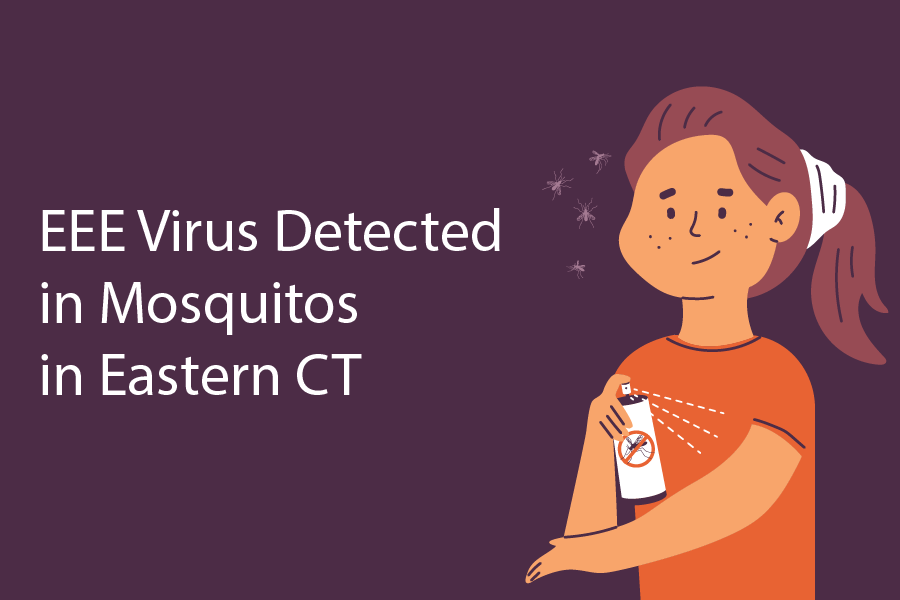The State of Connecticut Mosquito Management Program (MMP) announced that mosquitoes trapped in Canterbury on July 16 tested positive for eastern equine encephalitis (EEE) virus. These results represent the first EEE positive mosquitoes identified in the state by The Connecticut Agricultural Experiment Station (CAES) this year. The mosquitoes were Culiseta melanura, a predominately bird-biting species and Coquillettidia perturbans, a species that feeds opportunistically on both birds and mammals. West Nile virus (WNV) has also been detected in mosquitoes in 12 towns throughout the State. Connecticut residents are reminded to protect themselves from mosquito bites and mosquito-borne diseases.
“The detection of EEE virus in July is reason for concern as conditions are suitable for further build-up and spread of the virus in the coming weeks and months” said Dr. Philip Armstrong, Chief Scientist at CAES. “We are also detecting the virus in mosquitoes that feed on mammals which increases the risk for human infection. We will continue to closely monitor mosquitoes for virus amplification and encourage everyone to take simple measures such as wearing mosquito repellent and covering bare skin, especially during dusk and dawn when mosquitoes are most active.”
To reduce the risk of being bitten by mosquitoes, residents should:
- Minimize time spent outdoors between dusk and dawn when mosquitoes are most active.
- Consider the use of mosquito repellents containing an EPA-registered active ingredient, including DEET, Picaridin, IR3535, oil of lemon eucalyptus, para-methane-diol (PMD), or 2-undecanone when it is necessary to be outdoors.
- Wear shoes, socks, long pants, and a long-sleeved shirt when outdoors for long periods of time, or when mosquitoes are more active. Clothing should be light-colored and loose-fitting and made of tightly woven materials that keep mosquitoes away from the skin.
- Be sure door and window screens are tight-fitting and in good repair.
- Use mosquito netting when sleeping outdoors or in an unscreened structure and to protect infants when outdoors.
EEE is a rare but serious illness in humans with 4-8 cases reported in a typical year in the U.S. The last major outbreak occurred in 2019, involving 38 human cases nationally with 19 cases occurring in New England. EEE is the most severe mosquito-transmitted disease in the U.S. with approximately 40 percent mortality and
significant brain damage in half of survivors.
Connecticut Mosquito Management Program
The response to mosquito transmitted diseases in Connecticut is a collaborative inter-agency effort involving the Department of Energy and Environmental Protection (DEEP), The Connecticut Agricultural Experiment Station (CAES), the Department of Public Health (DPH), the Department of Agriculture, and the Department of Pathobiology at the University of Connecticut (UCONN). These agencies are responsible for monitoring mosquito populations and the potential public health threat of mosquito-borne diseases.
The CAES maintains a network of 108 mosquito-trapping stations in 88 municipalities throughout the state. CAES begins mosquito trapping and testing in June and continues into October. Positive findings are reported to local health departments and on the CAES website at https://portal.ct.gov/caes.
For information on EEE, WNV and other mosquito-borne diseases, what can be done to prevent getting bitten by mosquitoes, the latest mosquito test results, and human infections, visit the Connecticut Mosquito Management Program web site at https://portal.ct.gov/mosquito.
